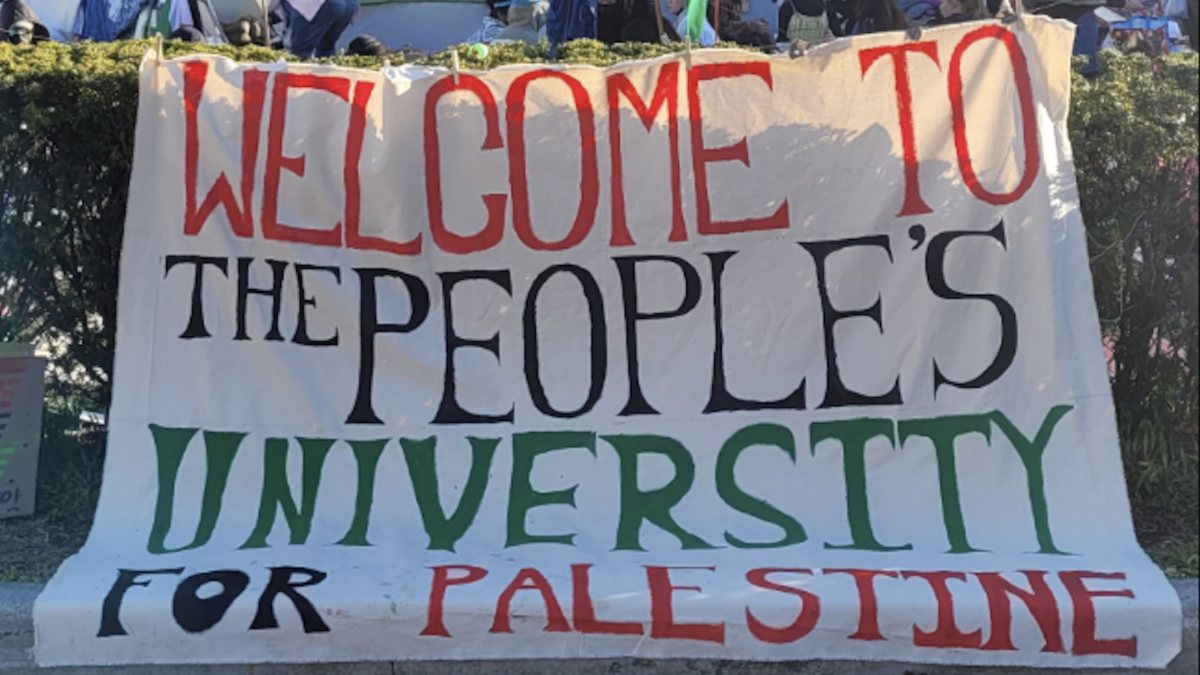
It was recently reported that Joe Biden, at a town hall meeting in South Carolina, called for an end to the practice of detaining illegal entrants to the United States, stating about detention centers, “We don’t need them.” Biden stopped short of offering details of just how he plans to shut down these facilities, and given his past support for them—both as a senator and vice president—Uncle Joe hardly has the moral authority to propose such a plan.
Indeed, it is only since the election of Donald Trump that those on the left have decided they no longer support the policy of locking up foreign citizens who come here illegally. As University of Denver Law professor César Cuauhtémoc García Hernández points out in his forthcoming book, “Migrating to Prison,” “Since the days of President Jimmy Carter’s administration, immigration prisons have enjoyed bipartisan support.”
All that said, Biden has a point. There is a case, and a conservative one at that, for ending the policy of detaining illegal entrants.
America has a long history of immigration detention, even for those who have come through the proper channels. At ports of entry such as Angel Island in California and Ellis Island in New York, Chinese and European migrants seeking a new life in America were detained, often for great lengths of time. But even with that history, by the mid 1950s immigration detainment nearly ceased to exist for one simple reason: cost.
It’s Really Expensive to Detain Thousands of People
Today, maintaining and operating more than 200 illegal entry detention centers is hugely expensive, costing Americans anywhere between $2.7 and $3.1 billion per year. In 2018 that broke down to $8.43 million, or $208 per day for each of the 40,520 illegal entrants used to calculate the budget that year.
In the budget proposal for 2020, the president is requesting Immigration and Customs Services to up that number to 60,000. And with Trump’s desire to end the practice of “catch and release” the number of foreign citizens detained daily could climb even higher.
Of course the reason the current and previous administrations hold thousands of illegal entrants in detention facilities is because they worry, if set free, these foreign citizens would simply disappear into the vast network of ethnic enclaves in many of our nation’s cities. The assumption is that, once out of custody, illegal immigrants and asylum seekers won’t show up as their cases crawl through the backlogged immigration court system—which as of last summer had more than 730,000 pending cases, each with an average wait time of more than 700 days.
But is that fear justified? Earlier this summer, Vice President Mike Pence claimed the vast majority of immigrants don’t show up to their removal hearings. While it was later determined that Pence was merely referring to one pilot program with those numbers, it turns out the vast majority of released immigrants actually do show up to their court proceedings.
For those who lack a lawyer, the number who show up to all of their hearings is 81 percent and for those with representation the number is 99 percent. It should be noted that these numbers include ongoing cases, and would most likely dip if only accounting for completed cases, as those who abscond often do so once it becomes clear asylum will be denied.
Other Alternatives Are a Lot Cheaper
The Department of Homeland Security also has various alternatives to detention (ATDs) it currently uses, which include telephonic monitoring, GPS monitoring, and a program known as the Intensive Surveillance Appearance Program (ISAP). Each requires a fraction of the $208 per day detention requires.
A DHS report from 2015 pegged the cost of telephonic monitoring at $0.17 per day and GPS monitoring at $4.41 a day. The most expensive of these alternatives was ISAP, at $8.37 per day on average, though it also included case management.
ISAP in particular has been cited for its effectiveness: 95 percent of participants show up to their final hearing. Adopting any or a combination of these options on a broader scale, not as a supplement to detention, but as a replacement for it, would save Americans hundreds of millions and even billions of dollars a year.
Contract Out to Private Organizations
And these are just the alternatives within DHS. Faith-based organizations such as Catholic Charities and Lutheran Social Services have participated in pilot programs, most of them quite small, in which they offer case management to illegal entrants in lieu of detainment, again with solid results.
Calling on faith-based organizations to replace the expensive and blunt instrument of federal immigration detainment should strike a chord with conservatives, especially those who are proponents of the Catholic social teaching known as subsidiarity. Subsidiarity is the political doctrine that “holds that nothing should be done by a larger and more complex organization which can be done as well by a smaller and simpler organization.”
Indeed, numerous conservative writers have been championing a decisive turn towards subsidiarity to buffet what Yuval Levin refers to as our nation’s foundering “mediating institutions.” Giving mediating institutions like Catholic Charities, Lutheran Social Services, and others the chance to walk asylum seekers through the immigration court process, perhaps in conjunction with some of the less invasive DHS surveillance protocols, would be a far more efficient use of tax dollars and simultaneously strengthen the nonprofits.
Of course, perhaps the most cost-efficient means of processing asylum seekers would be to immediately deport those with fraudulent claims. But with the court system as backed up as it is, it is unclear how the judiciary, or Congress for that matter, can make that happen in the short term.
Obstacles to Better Conditions for Border-Crossers
So why isn’t the federal government giving alternatives to detention and partnerships with nonprofits serious consideration? For one, even though the aforementioned 81 percent means the vast majority do show up for court proceedings, 19 percent is not an insignificant percentage, and with the United States on track to apprehend more than 1 million illegal entrants this year, translates to a lot of people bypassing the system.
Also, some might be concerned about the roots illegal entrants put down in America’s cities while awaiting the deportation process to play out. If the average case takes more than two years to complete, these foreign citizens would have plenty of time to set up a life for themselves, making deportation even more harsh.
And there is always the possibility that within that time frame illegal entrants could give birth to children, U.S. citizens, which would only put more political pressure on whether they could stay. However, with the current administration’s call to keep families detained together, it is unclear if illegal entrants would be more likely to have children after released to America’s cities or if kept in confinement.
But perhaps the greatest obstacle to ending the policy of immigration detention is that the immigration detainment economy is big business. The two largest private prison companies that administer immigration prisons, CoreCivic and GEO Group, have contracts with the federal government totaling $280 million and $475 million, respectively.
Both companies also spend more than $1 million a year on lobbying. In many cases, the small towns where immigration detention centers are located also come to rely on them for the health of their economies and even view them as a modern-day government works program.
The current practice of detaining immigrants represents big government using its powers inefficiently, solving a problem with brute, expensive force. Less invasive tactics and smaller institutions would be able to do the same job at a fraction of the cost.
I sincerely doubt Biden would be able to amass the political willpower to solve the border crisis any more effectively or efficiently than the current president. But if conservatives were to end the wasteful practice of detaining illegal entrants, and instead used alternatives to detention and partnered with nonprofit organizations, he wouldn’t have to.









